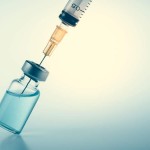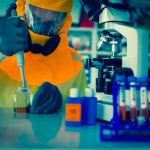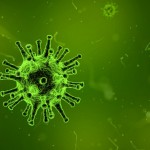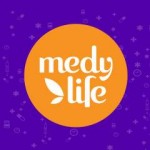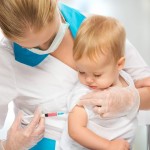Neonatal Respiratory Disease Syndrome(NRDS)
It is also called as Infant respiratory distress syndrome (IRDS). It is a serious medical condition where a newborn baby’s lungs cannot provide their body with enough oxygen. NRDS is also known as hyaline membrane disease, infant respiratory distress syndrome or newborn respiratory distress syndrome.
IRDS begins shortly after birth and is manifest by tachypnea, tachycardia, chest wall retractions (recession), expiratory grunting, nasal flaring and cyanosis during breathing efforts.
Clinical course:
As the disease progresses, the baby may develop ventilatory failure (rising carbon dioxide concentrations in the blood), and prolonged cessations of breathing (“apnea”). Whether treated or not, the clinical course for the acute disease lasts about 2 to 3 days. During the first day the condition worsens and requires more support. During the second day the baby may be remarkably stable on adequate support and resolution is noted during the third day, with a prompt diuresis.
Despite huge advances in health care, NRDS remains the most common single cause of death in the first month of life in the developed world.
Symptoms
Along with tachypnea and tachycardia.
There include:
Bluish color of the skin and mucus membranes (cyanosis)
Apnea
Decreased urine output
Grunting
Nasal flaring
Rapid breathing
Shallow breathing
Unusual breathing movement like drawing back of the chest muscles with breathing
Causes
It is caused by developmental deficiency of surfactant (slippery and protective substance) production and structural immaturity in the lungs. It can also result from a genetic problem with the production of surfactant associated proteins.
Diagnosis
These tests may include:
Physical examination - To check for the distinctive signs and symptoms of NRDS
Blood tests -To measure the amount of oxygen in the blood and check for an infection
A pulse oximetry test - To measure how much oxygen is being absorbed in the blood, using a sensor attached to the fingertip, ear or toe.
A chest X-ray - To look for the distinctive cloudy appearance of NRDS
An echocardiogram - A type of ultrasound scan that is used to create a picture of the inside of the heart
Treatments
Babies that are born premature or are at high risk for the respiratory diseases, should be treated at birth by a medical team that specializes in newborn breathing problems.
Artificial surfactant to an infant might be helpful.
Infants should be given warm, moist oxygen. However, this treatment needs to be monitored carefully to avoid side effects from too much oxygen.
A breathing machine is sometime used on the babies. Breathing machines can damage the lung tissue so use should be avoided when possible. Babies may need to use a breathing machine if they have:
High levels of carbon dioxide in the arteries
Low blood oxygen in the arteries
Low blood pH (acidity)
Repeated pauses in breathing
A treatment called continuous positive airway pressure (CPAP) may prevent the need for a breathing machine in many babies. CPAP uses a device that sends air into the nose to help keep the airways open.
Complications
There is a significant risk that babies who experience neonatal respiratory distress syndrome (NRDS) may develop further problems:
Air leaks
In some cases of NRDS, air can leak out of the lungs and become trapped in the chest cavity. This is known as pneumothorax. Air leaks can be treated by inserting a tube into the chest to allow the trapped air to drain.
Internal bleeding
Babies with NRDS may experience bleeding inside their lungs (pulmonary haemorrhage) and brain (cerebral haemorrhage). Bleeding into the lungs can be difficult to treat but usually air pressure from a ventilator and transfusion of blood products allows the bleeding to stop.
Bronchopulmonary dysplasia
Bronchopulmonary dysplasia (BPD) is a long-term lung condition that can affect some children with NRDS. It develops when the ventilator used to treat NRDS causes scarring to the lungs that affects their development. Symptoms of BPD include, rapid, shallow breathing and shortness of breath.
Developmental disabilities
If the brain is damaged during NRDS, either due to bleeding or a lack of oxygen, it can lead to long-term developmental disabilities such as learning difficulties, movement problems, impaired hearing and impaired vision.
References:
NHS
NCBI




